Search
Search Results

Image
Mesopotamian Antelope Amulet
The antelopes of this amulet were joined at their hindquarters. This gold jewellery was found (together with fish amulets) on Puabi's arm inside her grave. Early Dynastic Period, circa 2600 BCE. From the Royal Cemetery at Ur, Southern Mesopotamia...
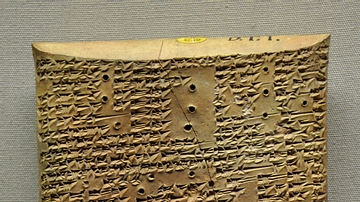
Image
Advice to a Mesopotamian Prince
The cuneiform inscription on this clay tablet claims various exemptions for the cities of Babylon, Nippur, and Sippar and warns rulers against disregarding them. This is a copy which was made about 700-650 BCE of an earlier composition. From...
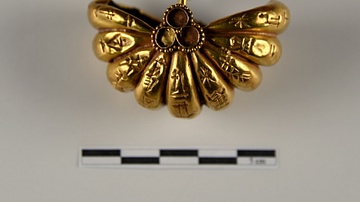
Image
Mesopotamian Gold Earring, Ur III
This is the upper surface of the earring . The right lower circle is broken and at the center of the trifoliate group lies a single golden sphere. The cuneiform text is read vertically, from the upper surface downwards on each segment, and...
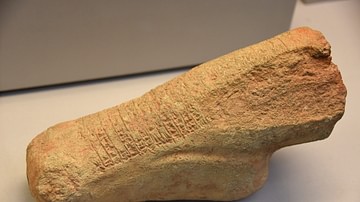
Image
Inscribed Part of a Mesopotamian Hound
The hindquarters of a terracotta statue of a sitting dog. The inscription mentions that it was dedicated to the goddess of healing, Gula, by an official, Ninurta-Resushu, for his king Nazi-Maruttash. The goddess Gula was usually shown with/represented...
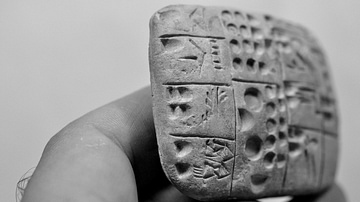
Image
Side View, Illegally Excavated Mesopotamian Clay Tablet
This clay tablet was illegally excavated. The precise provenance of the excavation is unknown, but probably from Southern Mesopotamia, modern-day Iraq. It is currently housed in the Sulaymaniyah Museum, Iraqi Kurdistan.
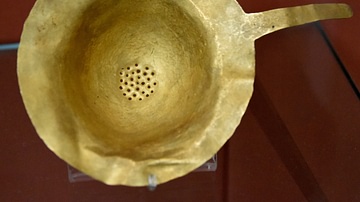
Image
Mesopotamian Gold Strainer
This gold strainer was roughly shaped and has a short handle. It was found at the bottom of the pit of Queen Puabi's grave. Beer and wine were drunk in Mesopotamia from at least the fourth millennium BCE and it is possible that the strainer...
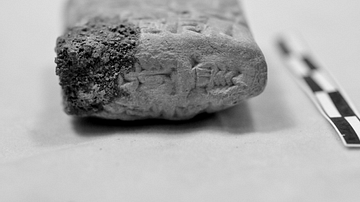
Image
End View, Illegally Excavated Mesopotamian Clay Tablet
This clay tablet was illegally excavated. The precise provenance of the excavation is unknown, but probably from Southern Mesopotamia, modern-day Iraq. It is currently housed in the Sulaymaniyah Museum, Iraqi Kurdistan.
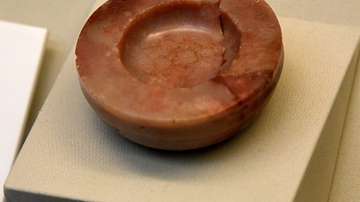
Image
Mesopotamian Cosmetic Bowl
This luxurious marble cosmetic container has an inscriptions marking it as the property of Marduk, god of Babylon. From Sippar, Southern Mesopotamia, Iraq. Circa 625-550 BCE. (The British Museum, London)
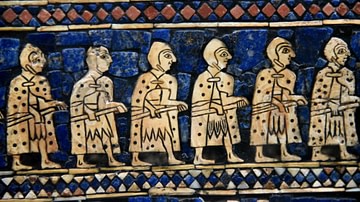
Definition
Sumerians
The Sumerians were the people of southern Mesopotamia whose civilization flourished between c. 4100-1750 BCE. Their name comes from the region which is frequently – and incorrectly – referred to as a “country”. Sumer was never a cohesive...
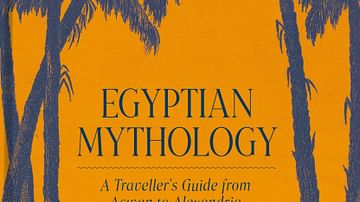
Image
Egyptian Mythology: a Traveller's Guide from Aswan to Alexandria
Egyptian Mythology: a Traveller's Guide from Aswan to Alexandria book cover.
© Thames & Hudson